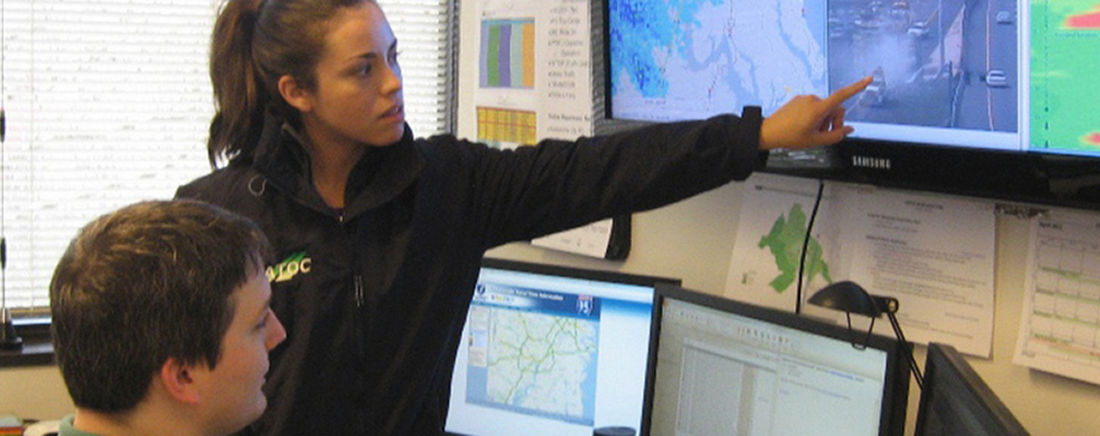A truck overturns on the Beltway. A building fire closes a major roadway. Service to a transit station is interrupted due to police activity. Such events occur frequently in the metropolitan Washington region. The immediate scenes of these incidents are handled with skill by responsible police, fire, transportation, and other responder personnel. Following well-established incident command procedures, they work to clear the problem as quickly as possible while protecting safety and security.
These occurrences, however, also can have impacts on the transportation system far from the incident scene, generating major traffic tie-ups or transit delays. On-scene responders often are too busy to spend significant time addressing these faraway secondary "ripple effects" affecting thousands of people. Historically, the region has addressed such ripple effects on a case-by-case basis without a single, designated regionwide entity responsible for coordination. To improve safety and mobility in the region through information sharing, planning, and coordination, the TPB, the Washington Metropolitan Area Transit Authority, and the District of Columbia, Maryland, and Virginia Departments of Transportation created the Metropolitan Area Transportation Operations Coordination (MATOC) Program. Visit the MATOC website to learn more and view its traveler information and resources.

Goals for the MATOC Program include:
- Based upon improved standard operating procedures and notification practices, strengthen multi-agency coordination among transportation response agencies during incidents.
- Improve the technological systems by which transportation agencies can share data with each other to aid incident management.
- Improve the quality and timeliness of the information available through current sources (e.g., radio and television stations) on transportation systems conditions, especially during incidents.
- Coordinate with the University of Maryland on the separate but related Regional Integrated Transportation Information System (RITIS). RITIS is to provide real-time transportation data compiled from each of the region's transportation agencies, and will be the primary source of information used within the MATOC Program. Traveler information compiled by RITIS is available through the MATOC website.
- Help ensure transportation systems condition information is provided to emergency management and public safety agencies to aid in their responses to declared emergencies or major disasters. In such incidents, transportation emergency management becomes one of a number of support functions to public safety agency leadership of the response.
News & Multimedia
-
News
November 21, 2013
On November 4, area officials gathered at COG to discuss the upcoming 2013-2014 winter and review plans on coordinating and communicating before, during and...
-
News
November 27, 2012
A new website and smartphone application to help visitors of the federally-owned cultural, historic, and recreational attractions in the Washington region find...
-
News
March 6, 2012
A year after the late-afternoon snowfall of January 26, 2011, brought traffic on the region's roadways to a standstill during the evening commute and left...